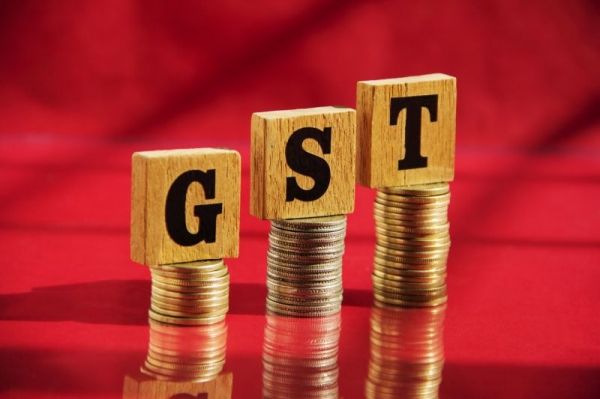The government backs merger of two tax slabs in GST
"If you combine 12% and 18% slabs to form a new slab somewhere in between, the tax burden on items currently on the 12% slab will increase. It remains to be see
- by B2B Desk 2021-02-19 08:39:28
A senior Finance Ministry official said the central government supports merging the Goods and Services Tax (GST) rates of 12% and 18% into a single slab, in response to a request made for the first time by some states and the Fifteenth Finance Commission (FFC).
The official added that the Goods and Services Tax Body, India's indirect federal tax authority, may discuss the matter at its March meeting.
In addition to the 0.25% and 3% special rates on precious stones and metals, India currently has four primary GST rates of 5%, 12%, 18% and 28%. There is also a tax on luxury and demerit goods like cars, tobacco, and aerated drinks.
"There have been discussions about the merger of the two tax slabs. It could be considered at the next council meeting (GST) in March. The aforementioned official said on condition of anonymity that the countries must also agree."
When India incorporated 17 central and state taxes into a single GST, it was assumed to be a revenue-neutral exercise; Which means that it will not lead to changes in actual state and central tax revenues. However, a series of cuts to the goods and services tax since then has lowered tax revenue, and a review by the tax board will aim to correct that.

"If you combine 12% and 18% slabs to form a new slab somewhere in between, the tax burden on items currently on the 12% slab will increase. It remains to be seen how businesses and consumers will respond. On the other hand, the tax items in 18% will be reduced for consumers.
If the council approves a single rate, then items like ghee, butter, cheese, and glasses could get more expensive, while soap, kitchen utensils, and clothing could get cheaper. But the final decision on the rates for individual items will be made by the fitment panel.
In a report it presented to parliament this month, the FFC called for the restoration of "GST rate neutrality", which has been violated in several interest rate cuts.
"Restoring a neutral rate of revenue would mean merging rates of 12% and 18% and operating with a structure of three-rates, a standard rate and a demerit rate of approximately 28% to 30% and reduced (tax) exemptions, '' said the FFC report, which recommended tax revenue sharing methods for the center with states for the 2021-26 period.
Kerala Finance Minister Thomas Isaac said in an interview last month that the most important thing for the next GST board meeting would be to discuss the required changes to the GST due to a sharp drop in the incidence of indirect taxes after of the introduction of the GST. Isaac said that unless this is fixed, countries will face a drastic drop in revenue collection when the GST compensation expires in June 2022.
The merger of GST panels has been discussed before, but not at the GST Board. Former Finance Minister Aaron Gaitley has called for the two panels to merge. The roadmap could be to work towards one standard rate instead of two standard rates of 12% and 18%. It could be a middle rate between the two ... the country should ultimately have a GST, which will only have blocks of 0% and 5% and a standard rate with luxury goods and sin goods as the exception, '' Jaitley wrote in a blog December 2018.
Abhishek A. said. Rastogi, partner at Khaitan: "Rate rationalization will help reduce classification disputes, but the merger of 12% and 18% may have some revenue implications. Therefore, managing the numbers correctly is essential."
Also Read: Stock-picking guide for a beginner

POPULAR POSTS
GST 2.0 Rollout Begins: New 5% & 18% Tax Slabs, Cheaper Essentials, and Helpline 1915 Explain
by Shan, 2025-09-22 10:20:19
GST Overhaul Explained: New 5% and 18% Slabs, 40% Tax on Luxury Goods
by Shan, 2025-09-04 11:53:34
Modi’s Diwali Gift: New GST Rates Slash Prices on Electronics, FMCG & More
by Shan, 2025-08-21 12:28:30
Jio Finance Launches Income Tax Filing at ₹24: How to File ITR Easily in 2025
by Shan, 2025-08-13 10:08:52
Income Tax Bill 2025: Lok Sabha Panel Backs Deductions for Late Filers
by Shan, 2025-07-22 12:28:58
Karnataka GST Crackdown: Why Shopkeepers Are Ditching UPI Payments
by Shan, 2025-07-16 12:14:56
GST Council Likely to Consider Lowering Tax on Online Food Delivery Fees
by B2B Desk, 2024-12-17 08:26:30
RECENTLY PUBLISHED

Loan EMIs to Drop as RBI Slashes Repo Rate - Full MPC December 2025 Highlights
- by Shan, 2025-12-05 11:49:44

Pine Labs IPO 2025: Listing Date, Grey Market Premium, and Expert Outlook
- by Shan, 2025-11-05 09:57:07

The Agentic Revolution: Why Salesforce Is Betting Its Future on AI Agents
- by Shan, 2025-11-05 10:29:23

Top 10 Insurance Companies in India 2026: Life, Health, and General Insurance Leaders Explained
- by Shan, 2025-10-30 10:06:42

OpenAI Offers ChatGPT Go Free in India: What’s Behind This Big AI Giveaway?
- by Shan, 2025-10-28 12:19:11

Best Silver Investment Platforms for 2025: From CFDs to Digital Vaults Explained
- by Shan, 2025-10-23 12:22:46




 Subscribe now
Subscribe now 